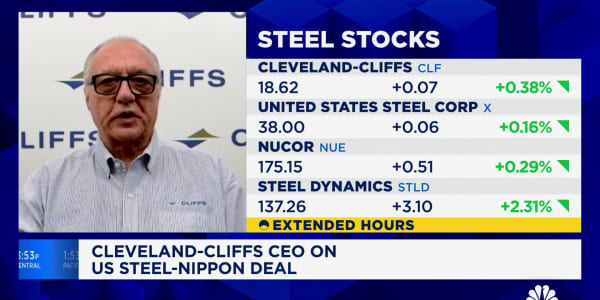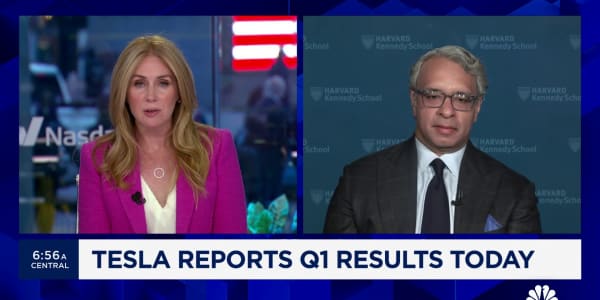When the markets spook investors, one of the first flights to safety is gold. It's the woobie blanket of investing. The gold rush has the metal breaking new thresholds almost on a daily basis. The color of fear in the markets is often associated with red. But I think the glistening, glitter of gold should also be part of the bearish ensemble. I asked Thomas Patton, CEO of the small-cap gold mining company Quaterra Resources Inc. , about his outlook on the gold rush as well as the company's recent gold discovery.
LL: How exciting is this latest gold discovery?
TP: The first three holes of the 2011 drilling campaign at Herbert Glacier all intersected visible gold: the results from two of them, holes 11E-1 and 11E-2, are outstanding. One hole intercepted 15.3 meters of 1.08 ounces of gold per ton. Within that was an two-meter true-width intercept of 3.8 ounces per ton, which is a lot of gold.
(Hole 11E-2 from 147.07 meters to 150.83 meters). Importantly, the intercepts have significant width. And the gold-bearing veins have significant strike or length, and depth.
Certainly, the project is in the right part of the world, the historic Juneau Gold Belt in Alaska, which is formerly a world-class district that has produced more than seven million ounces of gold. In 2010, the district was reactivated by the reopening of Couer Alaska’s Kensington gold mine located 40 kilometers north of the Herbert Glacier property.
In addition, Hecla Mining Company’s polymetallic Greens Creek Mine, a massive sulfide deposit containing silver, gold and zinc, is located in a parallel trend 20 kilometers to the west. Our partner at Herbert Glacier, Grande Portage Resources Ltd., will be conducting more drilling along the Deep Trench and Main Vein which will be key to figuring out just how extensive the mineralization is.
LL: Where do you see the price of gold by the end of the year?
TP: As a matter of principal I do not give a specific target price but I believe gold prices will be strong as the dollar weakens and investors look for safe havens. In many ways, the price of gold is being driven by fundamentals, not just current market sentiment. Gold grades at mines around the world are declining. Also, the mines are getting deeper and more expensive to operate. Significant new production takes years to bring on stream. This is coupled with increased demand because of gold’s growing role as a reserve currency.
Two years ago, the gold price dropped sharply as a result of the 2008 financial crisis. I am not sure that will happen again, especially as the roots of the current turmoil center on uncertainty surrounding the dollar and its role as a global currency. You have to ask this question: what are the alternatives to the dollar? And gold figures prominently in any answer. I would be bullish about the gold price in those circumstances.
LL: What kind of impact would a third round of quantitative easing have on gold?
TP: A third round of quantitative will probably raise questions about the stability of the dollar. And that should be good for gold as investors seek safety. There is a growing concern about the value of paper money, and this will only be exacerbated by dollar creation inherent in quantitative easing. The strong correlation between the debt ceiling and the price of gold is instructive in this regard.
LL: Silver prices are also being pushed higher because of the sovereign uncertainty. Where do you see silver going?
TP: Interestingly, silver has outperformed just about every asset class over the past few years. It has certainly outperformed gold and its price relative to gold is approaching more historic levels. I see that Eric Sprott has recently called silver the investment opportunity of the decade. I would pay attention to what Eric says.
LL: Copper is very popular with the emerging countries. Will copper prices get even stronger?
TP: In the short term the price of copper will turn on the level of economic activity in emerging countries, and China in particular.
Recently the price has softened in expectation of slower global growth. But in the medium to long term, it is important to understand that the demand for copper will bump against supply. As with gold, operating copper mines are getting long in the tooth, with grades dropping and the cost of mining rising. And new supply will take a long time to bring to the market. Provided that there is the economic where-with-all to raise the quality of life of hundreds of million of people in the emerging world, the price of copper will remain buoyant.
LL: What kind of extractive natural resource policy and exploration policies do you think need to be enacted in the United States in regards to critical metals? What kind of opportunity would that create for your company?
TP: Rising metal prices and surging resource nationalism underscore the need for a coherent and rational natural resource policy in the United States. The future availability of critical metals will be dependent on successful grassroots exploration, but current Federal regulations have forced much of this work offshore. Access to public land is absolutely critical for a revitalized mining industry.
This will necessitate a return to the concept of multiple-use and doing away with de facto wilderness areas created by punitive roadless policies and long-running studies that preclude meaningful exploration in certain areas.
The concurrent overhaul of the regulatory environment to simplify rules and provide for timely and cost effective permitting could return the United States to its former status as a preferred country in which to explore and mine.
LL: What do you think is happening when it comes to resource nationalism in the rest of the world?
TP: Many countries are increasingly viewing mineral resource deposits as strategic assets. And in a growing number of countries the acquisition and development of these resources is being coordinated and funded by semi state-run agencies. This is a return to the way the world was run in previous centuries. It is possible that some mineral deposits will be taken, so to speak, out of the market. This growing resource nationalism will only make mineral discoveries in North America more valuable with time.
A Senior Talent Producer at CNBC, and author of "Thriving in the New Economy:Lessons from Today's Top Business Minds."
Questions? Comments? Email us at
Follow on Twitter @ twitter.com/loriannlarocco
Follow NetNet on Twitter @ twitter.com/CNBCnetnet
Facebook us @






